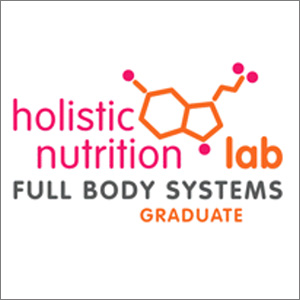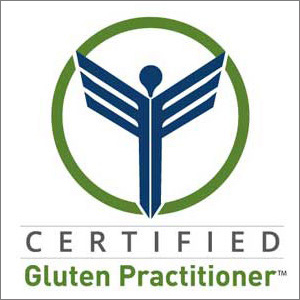 Let’s say you’ve been diligently reading labels since going gluten-free, ever mindful that gluten can often be sneaky – showing up where you’d least expect it.
Let’s say you’ve been diligently reading labels since going gluten-free, ever mindful that gluten can often be sneaky – showing up where you’d least expect it.
But did you ever stop to wonder, now that you’ve given up gluten – what not-so-great choices you might be making instead?
In other words, what is the trade-off?
For example, back when I first became gluten-free, I started eating a lot more eggs.
That’s because I was baking my own gluten-free bread, and the standard recipe called for three or four eggs per loaf.
Since eggs are gluten-free, I thought nothing of it.
Also, at least once a week, we’d have omelets for dinner – or even breakfast.
On occasion, I’d even whip up a soufflé.
(Sounds fancy, I know, but soufflés are actually pretty easy to make).
Then almond meal hit the market, and it seemed like a wonderful alternative to gluten-free flours.
Being an almond lover myself, I was ecstatic!
In a given week, I poured almond milk on my breakfast cereal and snacked on almonds by the handful.
So guess what happened?
After about a year on the gluten-free diet, I started experiencing many of the symptoms I’d had BEFORE going gluten-free.
What was that all about?
Well, long story short, I finally made an appointment with Dr. Wangen at the IBS Treatment Center in Seattle – and that’s when I learned I was actually allergic to eggs and almonds.
And dairy.
You’d think that was the end of it, right?
But believe it or not, knowing what other foods you might be allergic to is only the tip of the iceberg.
With that in mind, here’s what else you need to be diligent about when reading labels.
Sugar, Salt & Fat
This little trifecta of condiments is something to be on the lookout for whenever you shop for groceries.
The thing is, even though your favorite packaged cookies might be gluten-free – that doesn’t mean they are any better for you than regular chocolate chip cookies.
As an occasional treat, they’re fine.
But if you’re relying on packaged goods day in and day out – then you’re likely ingesting way more salt, sugar and added fat than your body can handle.
To make matters worse, manufacturers have gotten very sneaky about this.
Whether or not you’re gluten-free, they know exactly how to manipulate your favorite foods, and keep you coming back for more.
That’s just one of the trade-offs I’m talking about here.
That’s right, there’s more.
Chemicals & Preservatives
Along with added fat and sugar, those processed foods that so many of us have come to rely on – are also laden with chemicals and preservatives.
And these are just as important to be aware of.
In a nutshell, your body is probably still healing from the onslaught of gluten, and other foods, that you didn’t know you were so sensitive to.
And while you’ve given up gluten, chances are you’ve done what so many of us do in the beginning – you run to your local grocery store and stock up on the basics.
Things like gluten-free bread, cookies and crackers.
All that stuff you crave, that you can no longer have – unless it’s gluten-free.
Here’s my challenge to you:
Next time you’re shopping for groceries, take another look at the labels and see what else might be hiding in the package – beyond the basic flours and seasonings.
Are there ingredients listed that you don’t have a clue what they might be? Words you can’t pronounce?
Does it contain a lot of sugar?
(Hint: Ingredients are listed according to amount; in other words, the more there is of a particular ingredient, the closer it will be to the top of the list. What this tells you, is that if sugar is one of the first items listed, then you know there’s a lot of it.)
With that in mind, can you find the hidden trade-off?
GMO’s & Things
Some people are referring to genetically modified organisms in the food supply (aka GMO’s) as an extremely risky human experiment.
That’s because no one really knows how harmful GMO’s might be.
In Europe and many other countries there’s a strict ban on GMO foods – until they’re proven safe.
But not here in the USA.
Why is that?
Well, the scientific experiments that would prove these foods are safe for human consumption, just haven’t been done.
(And if you do happen to hear a claim to the contrary, chances are that particular scientist was hired by the very company manufacturing the genetically modified food – a conflict of interest if there ever was one.)
Unfortunately, GE corn and soy are two of the biggest culprits.
So, unless you are purchasing organic products, you can be almost certain that GMO’s are in the food you are feeding your family.
Here’s another thing:
Among the experts, it’s pretty clear at this point that GMO’s are at least partly responsible for the huge increase in food allergies, ADHD, autism and asthma – especially in our children.
And that’s another huge trade-off.
So what can you do?
This article was intended to alert you to some of the “trade-offs” that so many of us might have fallen prey to, inadvertently as it might have been.
(Myself included)
But there are still many things you can do to improve your diet, starting with fresh, wholesome ingredients that are low on the food chain.
Read up on the Dirty Dozen and Clean 15 – and buy organic fruits and vegetables whenever possible, or as your budget allows.
In time, you can also learn to bake your own gluten-free bread, cookies and other treats – giving you a lot more say over what you put into your body.
Now it’s your turn.
Have you fallen prey to any “trade-offs” since going gluten-free?
What is the most challenging part of your special diet?
Do you have ideas or suggestions that you’d like to share?
 Follow
Follow


Speak Your Mind